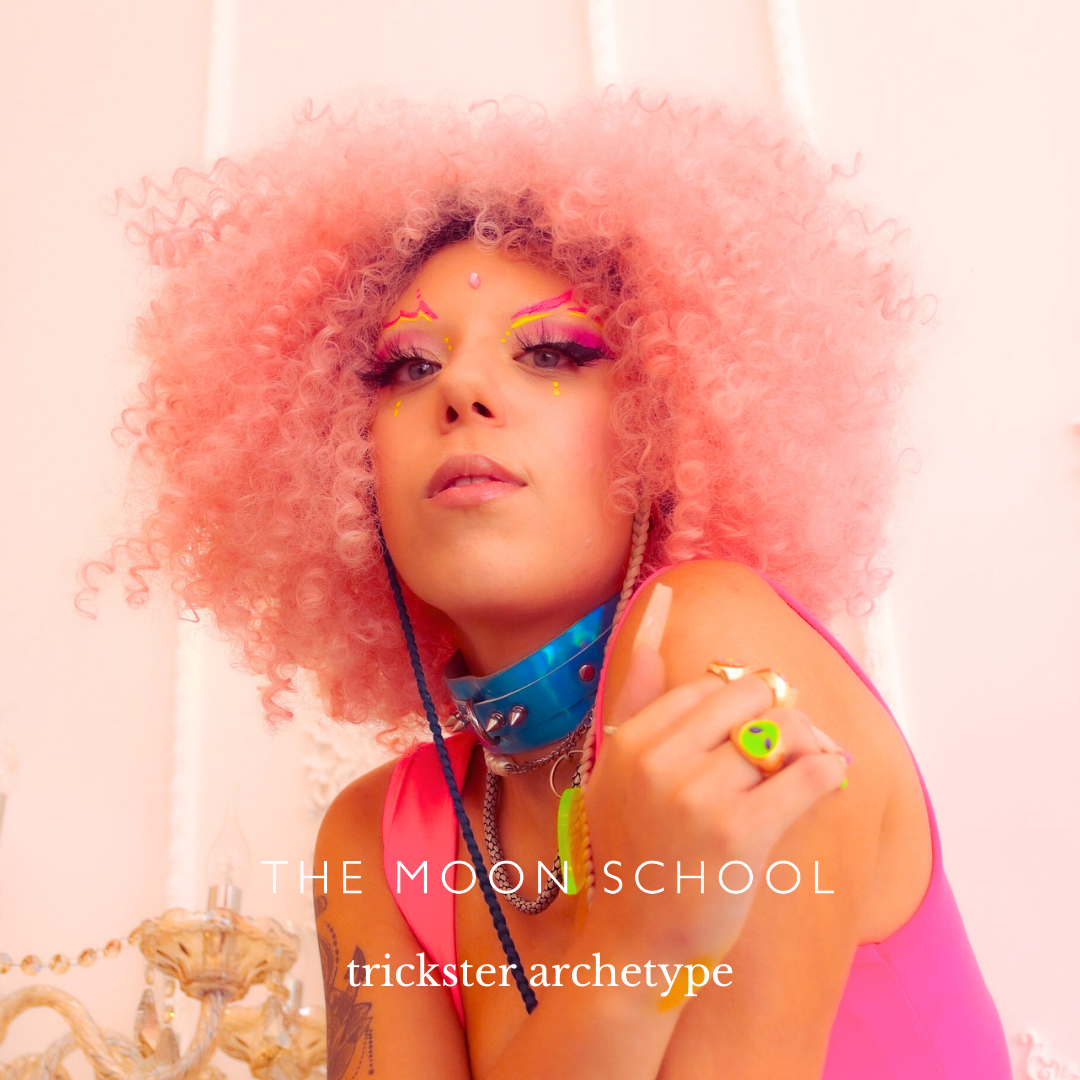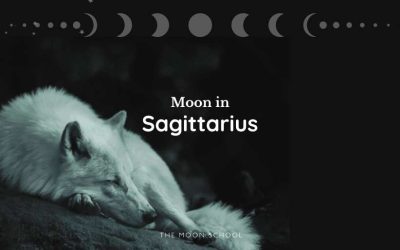The trickster archetype is an energy type that has existed in many cultures throughout history. It’s often associated with mischief, cunning, and unpredictability. This archetype is often depicted as a character who breaks the rules, challenges authority, and causes chaos!
While at first glance the trickster may seem like a negative or even a dangerous concept, it actually serves a really important purpose in many cultures. Because it’s regarded as a figure who disrupts the status quo and challenges the norms of society, it can be a powerful force for change. In fact, the presence of the trickster can be a catalyst for transformation.
Embodying subversion, and trickery (of course!) this energy type often challenges our assumptions and expectations, encouraging people to question authority and convention, and to think outside the box of normality.
Defining the Trickster Archetype
Tricksters are one of the most fascinating and ancient archetypes of all, appearing in both ordinary life, through nature, and also as trickster Gods and Goddesses.
But before we dig into the complexity of the trickster archetype, let’s cover the basics of what an archetype actually is…
What is an Archetype?
Archetypes are universal symbols and patterns that exist in the collective unconscious of humanity.
They’re innate – meaning they’re neither good nor bad, positive nor negative, but rather contain qualities that may be perceived that way.
Archetypes are a part of our psyche and are universally recognizable. They are recurring motifs that can be found in characters in mythology, literature, and art, across almost all cultures and time periods.
Carl Jung, the Swiss psychiatrist first, introduced the concept of archetypes, though in truth they’re much older.
Humans are programmed to recognize and respond to archetypes – this isn’t something we can switch off, and it often happens on a subconscious level. Ultimately, they represent fundamental human experiences and desires that are shared by all people.
YOU MAY BE INTERESTED IN: 7 Feminine Archetypes and How to Embody their Power
What is the Trickster Archetype?
The trickster archetype is one of the most fascinating and complex archetypes of all. Embodying paradox, it can be a hero or a villain, a creator or a destroyer, a friend or foe. And it can take multiple different forms, from jester, clown, or magician, to shape-shifter, raven, or fox.
In fact, the energy of the trickster archetype is characterized by paradox, ambiguity, and unpredictability, and refuses to be put neatly into a box! It can be both light and dark, rational and irrational, serious and funny!
It’s a master of disguise as well as deception. The trickster is a highly intelligent archetype. It has the power to reveal hidden truths and expose illusions. However, trickster characters may end up creating chaos and confusion, at times touching on wrong the side of danger and destruction.
Traits, qualities, and characteristics of the trickster archetype
The Trickster archetype is a complex and multifaceted character, embodying a range of traits and qualities that make them both fascinating and challenging to understand. Here are some of the key characteristics that define the Trickster archetype:
Deceptive: Tricksters are known for their ability to deceive and manipulate others. They often use their wit and charm to get what they want, even if it means bending the truth or breaking the rules.
Creative: Tricksters are highly creative and resourceful, using their intelligence and ingenuity to solve problems and overcome obstacles.
Unpredictable: Tricksters are notoriously unpredictable, often acting on impulse and taking risks that others would never dare to take.
Playful: Tricksters have a playful and mischievous nature, enjoying the thrill of the chase and the game of cat and mouse.
Irreverent: Tricksters are often irreverent, defying authority and challenging the status quo. They have a tendency to question everything and challenge conventional wisdom.
Adaptable: Tricksters are highly adaptable, able to change their appearance and behavior to suit their needs and achieve their goals.
Cunning: Tricksters are known for their cleverness and ability to outsmart others.
Mischievous: They enjoy playing pranks and causing mischief, often with a mischievous grin on their face.
Dualistic: Tricksters often have a dual nature, embodying both good and evil, light and dark, and chaos and order.
Resourceful: They are skilled at finding creative solutions to problems, often using unconventional means.
Charismatic: They have a magnetic personality that draws others to them, even if they don’t always trust them.
Weaknesses and shadow side of the trickster archetype
As already described, no trickster archetype example is purely positive! Like all archetypes, this one has some negative characteristics or shadows.
The shadow exists in the unconscious, and is a part of the psyche that contains personality traits that you have rejected, suppressed, or otherwise decided not to identify with.
WANT TO LEARN MORE ABOUT INTEGRATING YOUR SHADOW? Join the Honeyed Shadow 13-Day Journey HERE
Untrustworthy: Trickster characters can be charming and charismatic, but they often lack the trustworthiness that is necessary for healthy relationships.
Selfish: Tricksters can be very self-centered, prioritizing their own desires over the needs of others. This tendency towards self-interest can lead someone with dominant trickster energy to act in ways that are harmful or hurtful to others, damaging relationships and social dynamics.
Manipulative: They can use their wit and charm to manipulate others for their own gain.
Irresponsible: The trickster figure may express a lack of responsibility and be unreliable, often shirking their duties and leaving others to pick up the pieces.
Short-sighted: They may take risks without considering the long-term consequences, leading to unintended negative outcomes.
Disrespectful: Tricksters love to play tricks and pull pranks, but they may sometimes ‘cross the line’. The resulting sense of dishonesty and betrayal can lead to others losing trust in the trickster, which can be damaging to relationships and social dynamics.
Inconsistent: They may change their minds frequently or act impulsively, making it difficult for others to know what to expect.
Lack of empathy: Insensitive to the feelings of others, the trickster character may not consider the impact of their actions on others.
Lack of accountability: Those with this dominant archetype can sometimes refuse to take responsibility for their actions, instead blaming others for their mistakes.
Dishonest: Tricksters can be deceptive and dishonest, sometimes lying or withholding information to get what they want. As well as creating conflict, this erodes trust and stands in the way of intimacy.
Unpredictable: While it’s often seen as a positive trait that trickster characters are “disruptors” of order and convention, their unpredictability can also create chaos and instability, especially in personal relationships.
Examples of trickster archetypes in mythology, literature, film, TV, and pop culture
The trickster archetype is a surprisingly common character in all kinds of media. It’s been portrayed in a myriad of different forms in mythology, folklore, film, TV, and literature. From the trickster god Loki to the court jester, to the Cheshire cat, it’s a recurring theme that symbolizes an important role in many tales.
Here’s a list of trickster archetype examples you may, or may not, have come across…
Loki from Norse mythology (and Marvel): Probably the most well-known trickster god, Loki is known for his mischief, cunning, and ability to shape-shift.
Anansi from African folklore: A spider god of stories, wisdom, knowledge, and trickery. He uses his wit and cleverness to outsmart his enemies.
Bugs Bunny from Looney Tunes: A lovable cartoon character known for his mischievousness, clever schemes, and for playing tricks on his fellow
Willy Wonka from Charlie and the Chocolate Factory: Roald Dahl’s famous and cunning chocolate factory owner who puts his guests in all sorts of sticky situations.
Tom Sawyer from The Adventures of Tom Sawyer: In Mark Twain’s classic novel, Tom Sawyer is portrayed as a playful and mischievous trickster who often gets into trouble with his friends.
The Joker from Batman: DC Comics classic villain known for his unpredictable behavior and twisted sense of humor.
Hermes: In ancient Greek mythology, Hermes was the messenger god (also connected to hte planet Mercury) who’s also associated with trickery and thievery.
Puck from A Midsummer Night’s Dream: A mischievous fairy who causes trouble and confusion as he plays tricks on the other characters.
The Cat in the Hat from Dr. Seuss: An unstoppable trickster character who disrupts the orderly world of the children he visits with his playful and mischievous behavior.
Wile Coyote from Looney Tunes: Another Looney Tunes classic. This cunning, devious and constantly hungry coyote seems to spend his entire life repeatedly attempting to catch and eat the road runner.
Maui from Polynesian mythology: Another trickster god who is known for his trickery and cunning, often using his wits to accomplish his goals.
Captain Jack Sparrow from Pirates of the Caribbean: A pirate who uses his wit and charm to outsmart his enemies and get what he wants.
What’s the wisdom and purpose of the trickster archetype in storytelling?
Many writers will use trickster archetype examples in their work, to serve a particular purpose. Remember that like all archetypes, trickster energy resonates with people on an unconscious level. So when this character shows up, a reader (or viewer) will tap into the symbolism of the trickster, drawing meaning from it without even realizing.
Here are a few reasons for using a trickster character –
To add humor and levity: Tricksters are often associated with humor and mischief, and can be used to lighten the tone of a story or add comic relief.
To challenge authority and convention: Tricksters are often rebellious and irreverent and can be used to challenge the status quo and question authority.
To create conflict and tension: Tricksters can be unpredictable and disruptive and can be used to create conflict and tension within a story.
To provide contrast for the hero: Tricksters can be used as a contrast to the hero, highlighting their strengths and weaknesses.
To teach a lesson: Tricksters are often associated with learning and growth and can be used to teach a lesson or impart wisdom to the other characters.
To add complexity and depth to a character: Tricksters are often complex and multi-dimensional characters and can be used to add depth and complexity to a story or character.
What to do when a trickster shows up in your life?
We’ve talked a LOT about the trickster character, but this powerful and ancient energy also moves through the people we know and love in real life! So what then?
Once you recognize who is expressing a dominant trickster archetype, sit up and take note! It’s likely that they have something to teach you, and you may have something important to learn.
Embrace the unexpected
Tricksters usually arrive in your life, to disrupt the status quo! Their appearance tends to be unexpected, so they can teach us to embrace the unknown and find joy in the twists and turns of life.
Learn to laugh at yourself
It’s a particularly trickster trait to use humor to diffuse tense situations. They can bring comic relief where it’s needed and are brilliant at teaching us not to take ourselves too seriously. This makes the trickster archetype especially good at helping others to find the humor in their mistakes and learn to have a laugh!
Embrace change and transformation
People with dominant trickster archetypes are often associated with change and transformation. They can teach us to embrace change, and instead of feeling unsettled by it, see it as an opportunity for growth.
Question authority and convention
The trickster openly questions authority, challenging received wisdom and assumptions.
So when the trickster archetype enters into your life, it may be a sign that you’ve fallen asleep and become far too trusting. Make the effort to learn from this person. They may be able to guide to greater awareness and freedom.
Use your intelligence and creativity
Trickster archetypes are often clever and resourceful characters in life. They use their own wits and intelligence and creativity to solve problems and achieve their goals. They can teach us to use our own intelligence and creativity to overcome obstacles and achieve our dreams.
Embrace the duality of life
The Trickster archetype can show up to teach us to embrace the innate duality of life.
As people, they may appear changeable and often seem to switch their perspective, looking at life from a different outlook. Look closely, and trickster archetype people are able to embody both light and dark, positive and negative, and chaos and order simultaneously!
Sound familiar? Maybe you have a GEMINI MOON SIGN
Whether you encounter the trickster archetype in real life, approach them with curiosity and an open mind! By understanding their meaning, purpose, and message, you’ll likely better navigate the challenges and opportunities that come your way.












